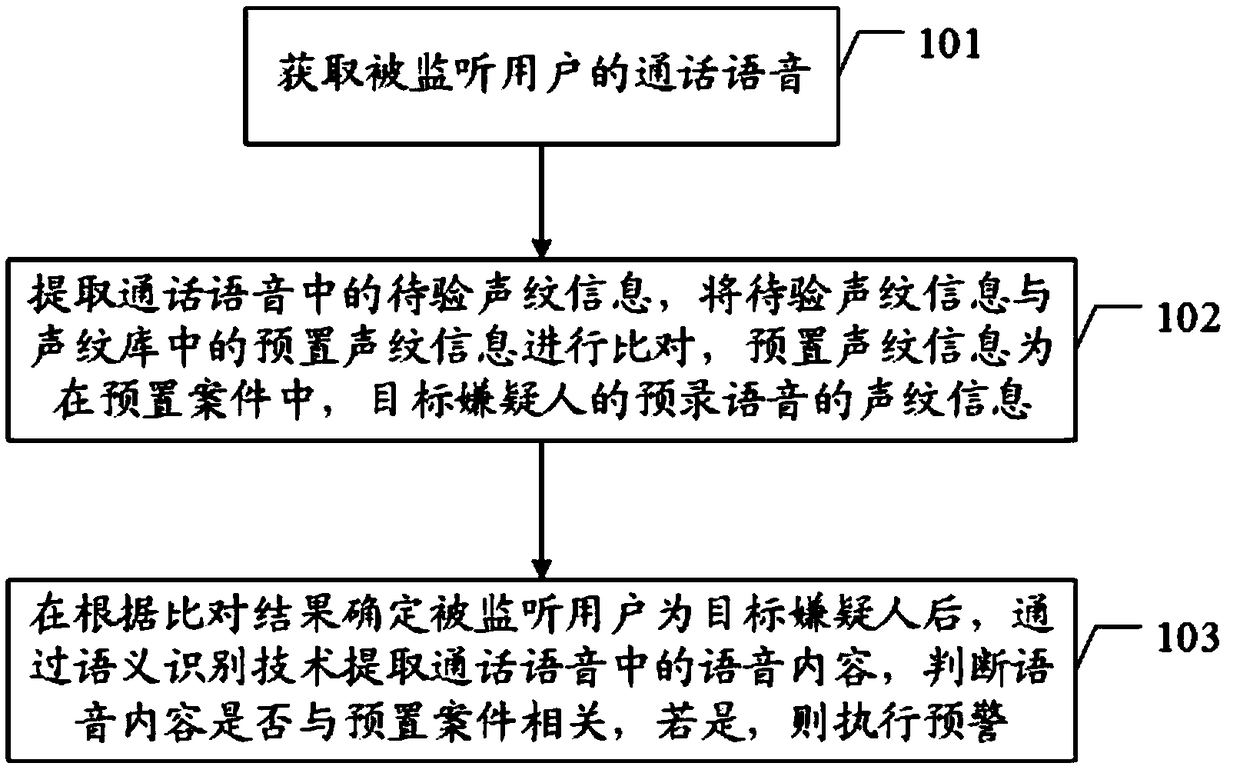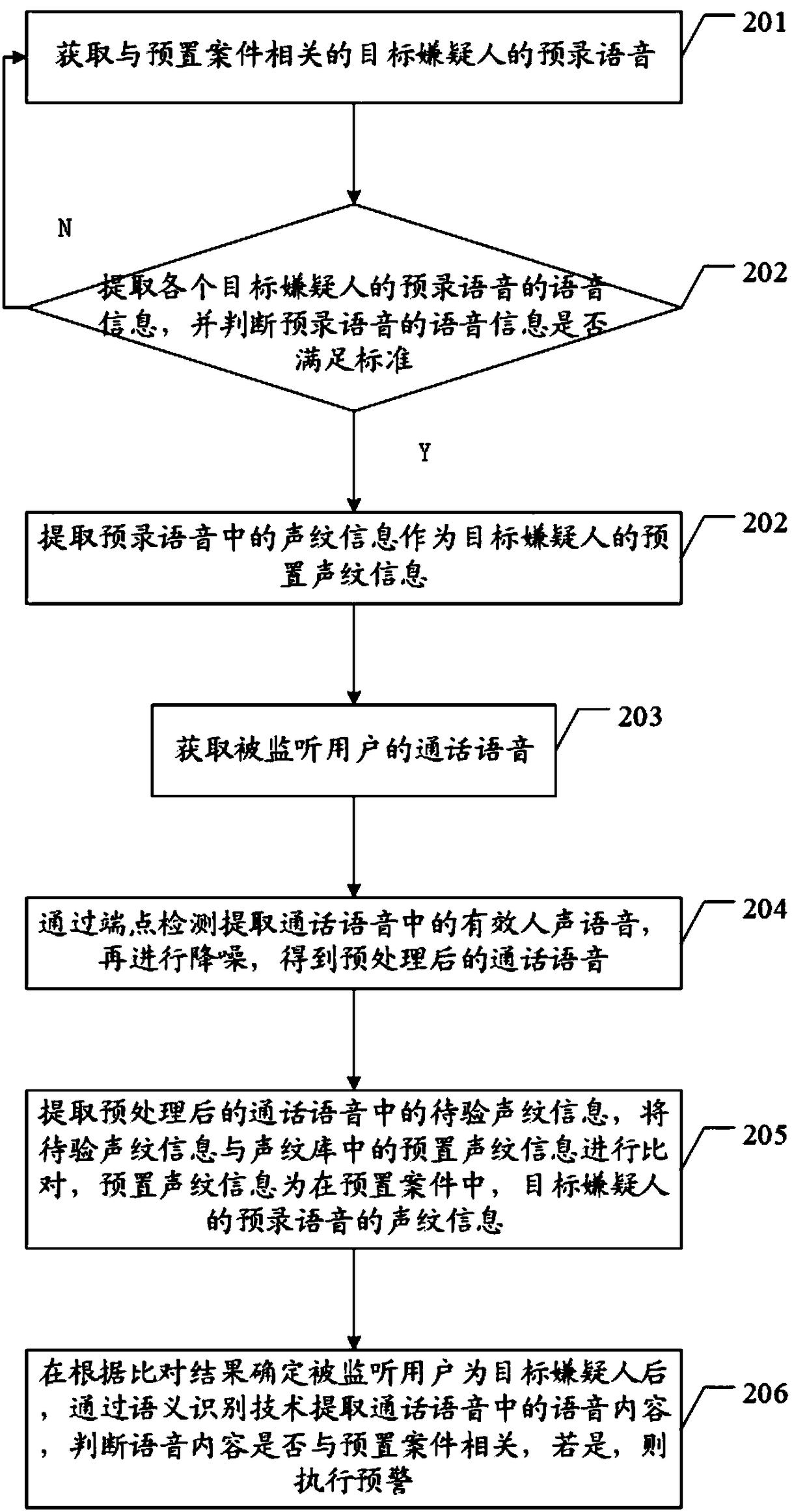Antiterrorist forewarning method and device based on telephone monitoring
An early warning device and telephone technology, which is applied in the fields of telephone communication, electrical components, electrical digital data processing, etc., can solve the problems of criminal investigation and anti-terrorism early warning, large manpower and time, and inability to accurately confirm that the caller is the criminal suspect itself, etc. Achieve the effect of improving work efficiency and accuracy and reducing manual operations
- Summary
- Abstract
- Description
- Claims
- Application Information
AI Technical Summary
Problems solved by technology
Method used
Image
Examples
Embodiment Construction
[0036] The embodiment of the present invention provides a method and device for anti-terrorism early warning based on telephone monitoring, which can accurately identify the identity of the monitored person and realize anti-terrorism early warning.
[0037] In order to make the purpose, features and advantages of the present invention more obvious and understandable, the technical solutions in the embodiments of the present invention will be clearly and completely described below in conjunction with the accompanying drawings in the embodiments of the present invention. Obviously, the following The described embodiments are only some, not all, embodiments of the present invention. Based on the embodiments of the present invention, all other embodiments obtained by persons of ordinary skill in the art without making creative efforts belong to the protection scope of the present invention.
[0038] see figure 1 , an embodiment of a method for anti-terrorism early warning based o...
PUM
 Login to View More
Login to View More Abstract
Description
Claims
Application Information
 Login to View More
Login to View More - R&D
- Intellectual Property
- Life Sciences
- Materials
- Tech Scout
- Unparalleled Data Quality
- Higher Quality Content
- 60% Fewer Hallucinations
Browse by: Latest US Patents, China's latest patents, Technical Efficacy Thesaurus, Application Domain, Technology Topic, Popular Technical Reports.
© 2025 PatSnap. All rights reserved.Legal|Privacy policy|Modern Slavery Act Transparency Statement|Sitemap|About US| Contact US: help@patsnap.com



